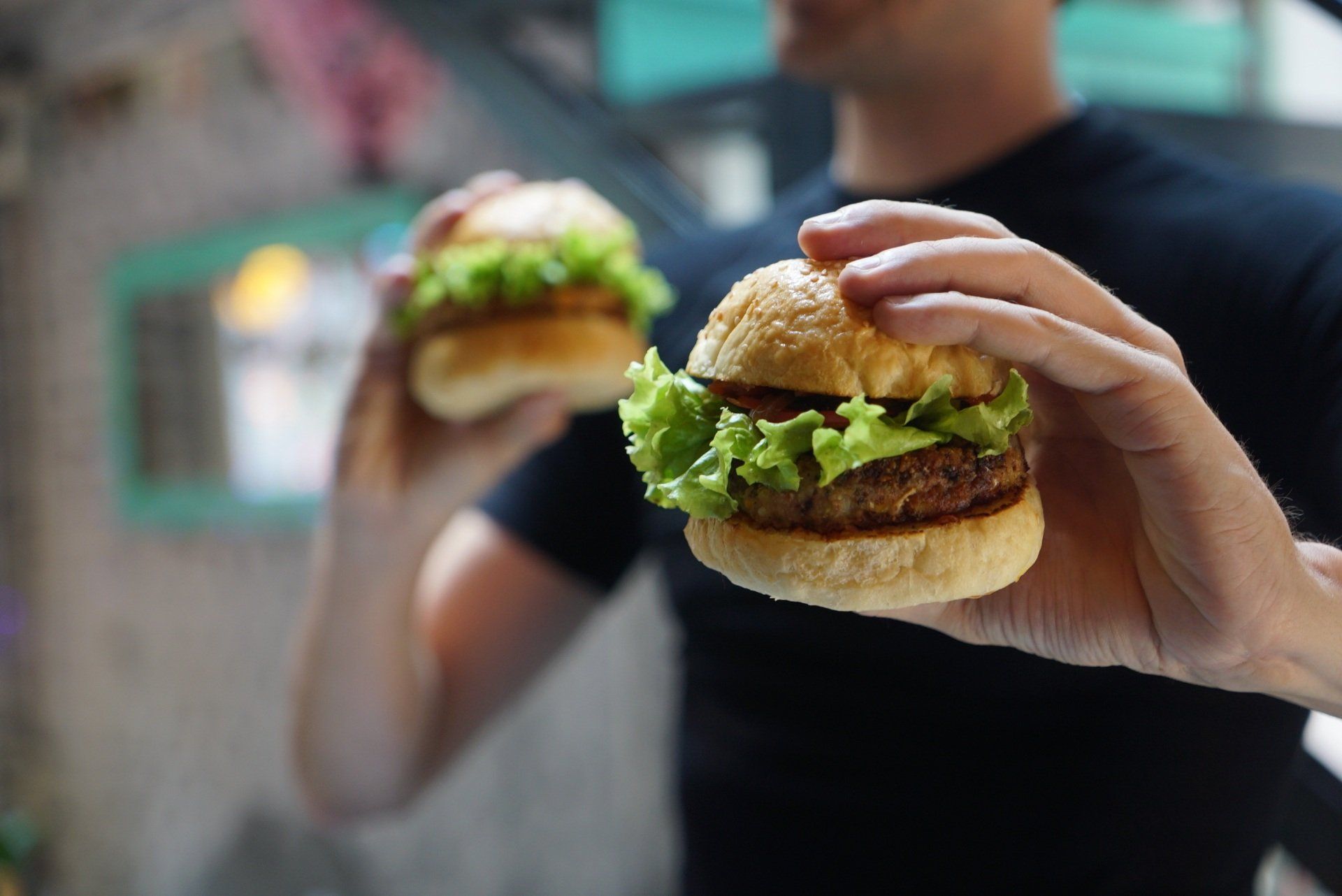The 4 Types of Processed Foods You Need to Know to Avoid Weight Gain
Have you ever wondered what happens to your food before it ends up in your grocery cart? Well, let me tell you, it's a wild ride. 60% of the calories Americans consume are from ultra-processed foods and it's no laughing matter. These foods contribute to poor health outcomes like insulin resistance, inflammation, and obesity. But what even counts as processed food?
It's easy to spot the neon orange cheese dust and hot dogs as the bad guys and kale as the knight in shining armor. But what about all the foods that fall in between? The packaged crackers with just a few recognizable and healthy-sounding ingredients, are they the optimal option for health or just less harmful than cheese dust? Granola? Canned beans? It's like trying to navigate a minefield in the grocery store.
But fear not, my fellow shoppers, I'm here to help. We'll go over some definitions and highlight some of the most damaging components of processed foods to make your shopping a little less overwhelming and a little more beneficial to your health. So, buckle up and let's dive into the world of food processing.
Here is the top line summary on processed foods:
Processed Foods
This category includes foods that have been modified to improve their taste, texture, or shelf-life. These foods often have added sugar, salt, and oil, and may contain artificial flavors, colors, and preservatives. Canned fruits in syrup, pickles, and cheese spreads are examples of processed foods. These foods are less healthy than minimally processed foods, but they're not as bad as ultra-processed foods.
Ultra-processed Foods
Ultra-processed foods are the most modified of all. They're typically made with a combination of processed foods, culinary ingredients, and additives. They're often high in calories, sugar, and unhealthy fats, and low in nutrients. Examples include chips, candy, frozen dinners, and soft drinks.
So, when you're out shopping, remember that unprocessed and minimally processed foods should fill most of your cart. Be wary of processed foods and avoid ultra-processed foods as much as possible. And don't forget to check the packaging for endocrine disruptors like BPA and phthalates. And just like that, you'll be a pro at navigating the minefield that is the grocery store.
Now let’s dive in.
The NOVA classification system is a tool that scientists use to categorize food based on how much processing it goes through. It splits all food into four categories: unprocessed and minimally processed foods, processed culinary ingredients, processed foods, and ultra-processed foods.
The University of São Paulo in Brazil developed this system back in 2010, and it's now one of the most commonly used food-processing classification systems in scientific literature.
Unprocessed And Minimally Processed Foods
Let's start with the best category: unprocessed and minimally processed foods. These are foods that haven't been altered much or have been altered with minimal processing. Examples of unprocessed foods include fruits, vegetables, raw cuts of meat and fish, mushrooms, eggs, and nuts.
Minimally processed foods, on the other hand, may have undergone some basic processing such as being washed, chilled, dried, crushed, ground, filtered, roasted, boiled, fermented, pasteurized, chilled, frozen, or vacuum-packed.
However, these processes don't involve adding extra salt, sugar, or other ingredients. These foods are considered to be mostly pure and are generally the foundation of a healthy diet.
Processed Culinary Ingredients
Next, we have processed culinary ingredients. These are foods that are calorie-dense and are usually used in small amounts as ingredients in other dishes. Examples include oils, butter, sugar, and salt. These foods can impact your health depending on the context in which they are consumed.
For example, roasting vegetables in olive oil is healthier than drinking a sugary coffee. However, some processed culinary ingredients such as processed seed oils like soybean oil should be avoided entirely as they are high in linoleic acid, an omega-6 fatty acid that can cause fat cells to store more fat and can lead to obesity and insulin resistance.
Processed Foods
Moving on to processed foods, these are foods that are created by combining foods from the first two categories. Examples include canned fish in a salty brine, fruit preserved in sugary syrup, and most cheeses, tofu, and processed meats like ham, bacon, smoked fish, and pastrami. These foods usually have at least three ingredients and can have several more. The easiest way to tell the difference between processed and minimally processed foods is by scanning the label for added ingredients.
Ultra-Processed Foods
Finally, we have ultra-processed foods. These are the foods that have undergone the most processing and are often created by manufacturers to have long shelf lives. They usually have many added ingredients and are often unrecognizable as a whole food.
Examples include instant noodles, frozen dinners, and soft drinks. These foods are often high in added sugars, salt, and unhealthy fats, and have been linked to a higher risk of chronic diseases such as obesity, diabetes, and heart disease.
Let’s Process This
The less processed a food is, the better it is for your health. Unprocessed and minimally processed foods should make up the majority of your diet, while processed foods and ultra-processed foods should be consumed in moderation. So, next time you're at the grocery store, take a look at the labels and think about how much processing that food has gone through before it ended up in your cart. Your body will thank you for it.
The Impact of Processed Food on Metabolic Health
You may have heard of the dangers of trans fats and refined grains, but let me break it down for you in more detail.
Trans Fats
Trans fats, whether they're naturally occurring in meat or industrially created, they both have a similar impact on plasma lipoproteins, including HDL and LDL cholesterol. But research shows that industrial trans fats are more likely to promote inflammation and cellular stress, which are linked to insulin resistance and other metabolic diseases.
Trans fats also tend to disrupt liver function and have been known to cause liver damage in mice. And it's not just the liver that's affected, trans fats also inhibit insulin sensitivity, possibly by altering insulin receptor signaling.
Because of these strong links to disease, the Food and Drug Administration (FDA) banned artificial trans fats, also known as partially hydrogenated oils, in 2018, but unfortunately, most countries have not taken that step yet.
Refined Grains
Now let's talk about refined grains, they're also considered ultra-processed food. Whole grains like corn kernels, wheat, and brown rice contain three key parts, the bran, germ, and endosperm.
But during the refining process, the bran and germ are removed, leaving just the endosperm. This may extend the shelf life of the grain, but it also removes the fiber and nutrients that our body needs. The refined grain is broken down more quickly when digested, which translates to increased blood glucose levels sooner after eating.
Even if manufacturers enrich the refined grain with synthetic versions of the vitamins stripped away by processing, it still doesn’t contain fiber which helps slow the body’s breakdown of starches into glucose, helping keep blood sugar stable.
The Effect of Processed Foods on The Gut Microbiome
Now, let's talk about processed foods and their impact on the gut microbiome and oxidative stress. Many of the techniques used in food processing, like exposure to heat or light or adding iron to fortify grains, promote lipid oxidation in the foods, which increases the number of free radicals in the fats (lipids).
Many seed oils are also easily oxidized. Eating too many of these foods can cause oxidative stress in your body, in which excess free radicals can cause damage to tissue and DNA.
Your diet also determines the makeup of your gut microbiome. There are trillions of microbes living in your gut, and scientists know that this web of life has a significant impact on your metabolic fitness. How much processed food you eat is one major factor determining what kind of bacteria and other microbes thrive in your gut.
In one study, researchers analyzed the gut microbiomes of more than 1,000 people. They tracked how different eating habits correlate with certain gut microbes and markers of heart health and metabolic fitness. People who mainly ate more healthy, plant-based, unprocessed foods tend to be nutrient-dense, had gut microbes associated with metabolic markers of lower risk of heart disease and Type 2 diabetes.
On the other hand, eating a diet with fewer of these whole foods fostered microbes linked to metabolic markers of poorer health.
Why do processed foods so negatively affect our gut microbiomes? Processed foods promote inflammation and lack the metabolism-regulating fiber that whole grains and vegetables provide. Ingredients in heavily processed foods like artificial sweeteners and emulsifiers can encourage gut bacteria that produce a more pro-inflammatory environment.
Ultra-processed foods have a negative impact on our metabolic health, it's important to be mindful of the amount of processed foods in our diet and strive for a balance of whole grains, fruits, and vegetables for optimal gut and overall health.
But let's not forget, it's okay to indulge in a processed treat every once in a while, just make sure it's not the main course of your diet. And don't forget, always read the labels and check for the amount of trans fats and refined grains in the products you're buying.
It's also important to note that some processed foods may be labeled as "low-fat" or "low-carb", but that doesn't necessarily mean they're healthy. These products often have added sugars or artificial sweeteners to make up for the lack of fat or carbs, and these ingredients can also have negative effects on our health.
Again, ultra-processed foods can negatively impact our metabolic health by altering insulin sensitivity, disrupting liver function, spiking blood sugar levels, promoting oxidative stress, disrupting the gut microbiome, and promoting inflammation.
And while it's important to be mindful of the amount of processed foods in our diet, it's also important to be aware of the ingredients and make informed choices about the products we're consuming. Remember, our health is worth investing in, and the small changes we make in our diet can make a big impact on our overall well-being.
The Takeaways
When considering processed foods, it is important to keep in mind that whole, unprocessed foods contain the highest amount of micronutrients and healthy fiber. To maximize nutrient intake, it is recommended to choose foods that resemble their natural state. Minimally processed foods can also be a nutritious option, as long as they do not contain packaging materials that have negative impacts on health, such as BPA or phthalates.
It is also important to be mindful of the type of oil used in processed foods, as certain oils like canola, corn, and soybean oil contain linoleic acid. When choosing processed foods, it is recommended to look for options with short ingredient lists that include whole grains, seeds, nuts, no added sugar, and low sodium. Foods that resemble whole foods and have recognizable ingredients, are less processed and can be considered safer options. Additionally, it is important to check the nutritional information and avoid high levels of salt, sugar, or refined seed oils.
Finally, it is best to avoid ultra-processed foods altogether, as they can have a significant impact on overall health. Studies have shown that the types of microbes in the gut can change rapidly with even short-term dietary changes. These foods are often identified by their long ingredient lists, including additives such as dextrose, maltose, or artificial sugars, and lack of resemblance to whole foods.










